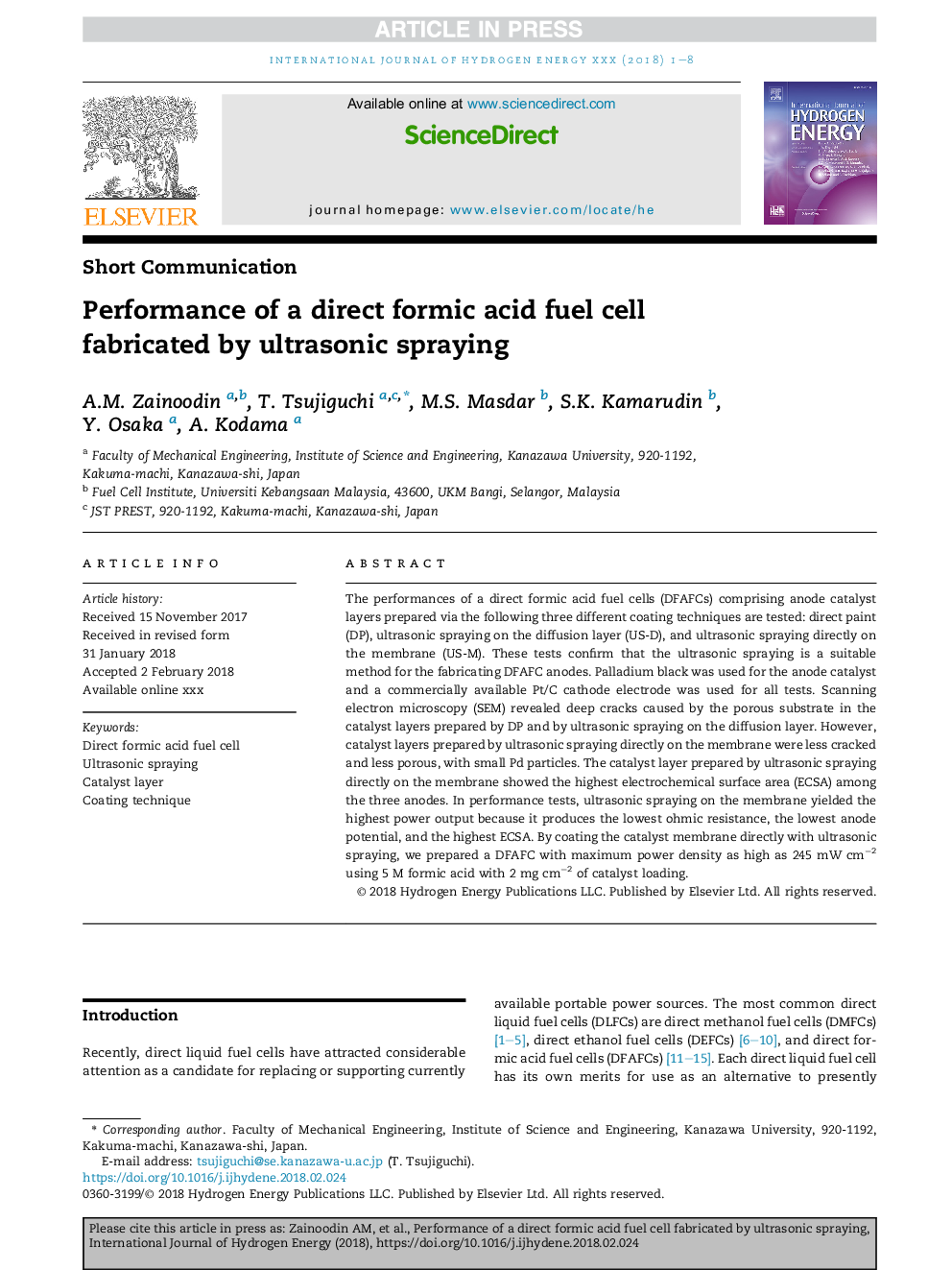| Article ID | Journal | Published Year | Pages | File Type |
|---|---|---|---|---|
| 7707116 | International Journal of Hydrogen Energy | 2018 | 8 Pages |
Abstract
The performances of a direct formic acid fuel cells (DFAFCs) comprising anode catalyst layers prepared via the following three different coating techniques are tested: direct paint (DP), ultrasonic spraying on the diffusion layer (US-D), and ultrasonic spraying directly on the membrane (US-M). These tests confirm that the ultrasonic spraying is a suitable method for the fabricating DFAFC anodes. Palladium black was used for the anode catalyst and a commercially available Pt/C cathode electrode was used for all tests. Scanning electron microscopy (SEM) revealed deep cracks caused by the porous substrate in the catalyst layers prepared by DP and by ultrasonic spraying on the diffusion layer. However, catalyst layers prepared by ultrasonic spraying directly on the membrane were less cracked and less porous, with small Pd particles. The catalyst layer prepared by ultrasonic spraying directly on the membrane showed the highest electrochemical surface area (ECSA) among the three anodes. In performance tests, ultrasonic spraying on the membrane yielded the highest power output because it produces the lowest ohmic resistance, the lowest anode potential, and the highest ECSA. By coating the catalyst membrane directly with ultrasonic spraying, we prepared a DFAFC with maximum power density as high as 245 mW cmâ2 using 5 M formic acid with 2 mg cmâ2 of catalyst loading.
Related Topics
Physical Sciences and Engineering
Chemistry
Electrochemistry
Authors
A.M. Zainoodin, T. Tsujiguchi, M.S. Masdar, S.K. Kamarudin, Y. Osaka, A. Kodama,
